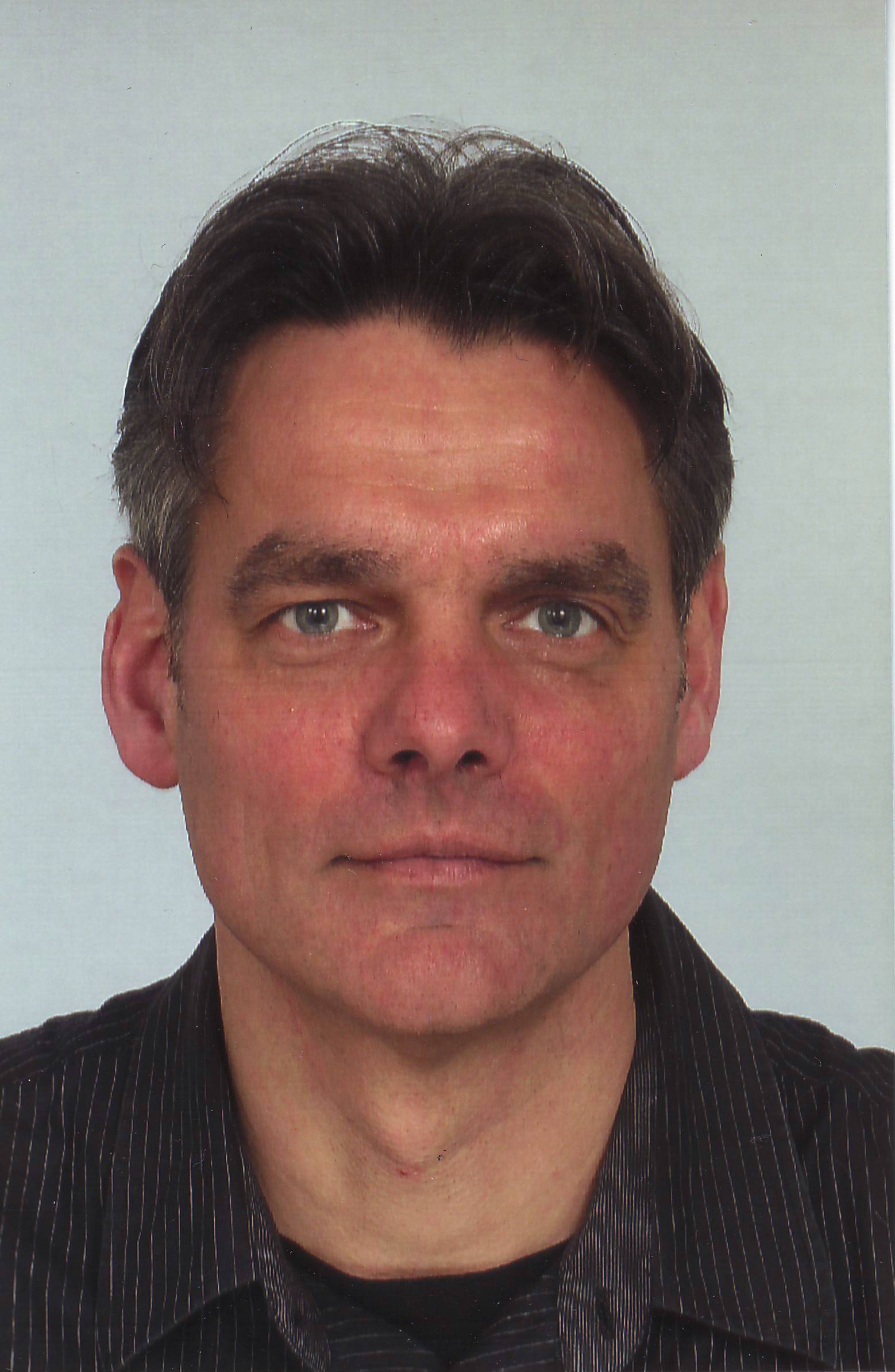
prof. dr. R.P. (Rob) Coppes

1988 MSc Biology, University of Groningen, major Neuropharmacology and Neurophysiology, minor Behavioural Physiology.
1993 PhD in Molecular Pharmacology, Faculty of Mathematics and Natural Sciences, University of Groningen, The Netherlands. Modulation of Noradrenergic Neurotransmission by Prejunctional Receptors
1993-2000 Post-doctoral fellow in clinical radiobiology at theDept Radiobiology, University of Groningen, The Netherlands
2000-present Clinical Radiation Biologist at the Department of Radiation Oncology of the University Medical Center Groningen.
2000-2005 Assistant Professor at the Departments of Radiation Oncology and Cell Biology, section Radiation & Stress Cell Biology, the University Medical Center Groningen.
2003-2006 Co-ordinator of the European Commission 6th Framework, Life Sciences, Genomics and Biotechnology for Health Project “FIRST” (2004, Contract no.: 503436).
2004-2009 Board Member of the Dutch Radiation Biology Society (NVRB)
2005-present Associate Professor of the Departments of Radiation Oncology and Cell Biology, section Radiation & Stress Cell Biology, University Medical Center Groningen.
2009-present President of the Dutch Radiation Biology Society (NVRB)
2011-presentCouncillor Biology of the International Association for Radiation Research (IARR)
Selected publications:
Nanduri LSY et al. Regeneration of irradiated salivary glands with stem cell marker expressing cells. Radiother Oncol (2011).
Coppes RP, Muijs CT, Faber H, Gross S, Schippers JM, Brandenburg S, Langendijk JA, van Luijk P. Volume dependent expression of in and out-of-field effects in the proton irradiated rat lung. Int J Radiat Oncol Biol Phys, 81, 262–269, (2011).
Pringle S, Nanduri LSY, van der Zwaag M, van Os RP, Coppes RP. Isolation of mouse salivary gland stem cells from salispheres. http://www.jove.com/details.stp?id=2484 doi: 10.3791/2484. J Vis Exp. (2011);(48). pii: 2484
Coppes R.P. Stokman M. Stem cells and the repair of radiation-induced salivary gland damage. Oral Dis. 2010 17(2):143-53.
Niemantsverdriet M, de Jong E, Langendijk JA, Kampinga HH, Coppes RP. Synergistic induction of profibrotic PAI-1 by TGF-beta and radiation depends on p53. Radiother Oncol. 2010; 97(1):33-5
Ghobadi G, Hogeweg LE, Faber H, Tukker WGJ, Schippers JM, Brandenburg S, Langendijk JA, Coppes RP, van Luijk P. Quantifying local radiation-induced lung damage from computed tomography. Int J Radiat Oncol Biol Phys 2010; 76(2):548-56
Feng J, van der Zwaag M, Stokman MA, van Os R, Coppes RP. Isolation and characterization of human salivary gland cells for stem cell transplantation to reduce radiation-induced hyposalivation. Radiother Oncol 2009; 92, 466-471.
van Luijk P, Faber H, Schippers JM, Brandenburg S, Langendijk JA, Meertens H, Coppes RP. Bath and shower effects in the rat parotid gland explain increased relative risk of parotid gland dysfunction after intensity-modulated radiotherapy. Int J Radiat Oncol Biol Phys 2009 July 15;74(4):1002-5.
Coppes RP, van der GA, Lombaert IM. Stem cell therapy to reduce radiation-induced normal tissue damage. Semin Radiat Oncol 2009 April;19(2):112-21.
Burlage FR, Faber H, Kampinga HH, Langendijk JA, Vissink A, Coppes RP. Enhanced proliferation of acinar and progenitor cells by prophylactic pilocarpine treatment underlies the observed amelioration of radiation injury to parotid glands. Radiother Oncol 2009;90(2):253-6.
Lombaert IM, Brunsting JF, Wierenga PK, Kampinga HH, de Haan G, Coppes RP. Cytokine treatment improves parenchymal and vascular damage of salivary glands after irradiation. Clin Cancer Res 2008 December 1;14(23):7741-50.
Lombaert IM, Brunsting JF, Wierenga PK, Kampinga HH, de Haan G, Coppes RP. Keratinocyte growth factor prevents radiation damage to salivary glands by expansion of the stem/progenitor pool. Stem Cells 2008 October;26(10):2595-601.
Lombaert IM, Brunsting JF, Wierenga PK, Faber H, Stokman MA, Kok T, Visser WH, Kampinga HH, de Haan G, Coppes RP. Rescue of salivary gland function after stem cell transplantation in irradiated glands. PLoS One 2008;3(4):e2063.
Projecten:
Multidisciplinary evaluation of the cancer risk from neutrons relative to photons using stem cells and the induction of second malignant neoplasms following paediatric radiation therapy: EU FP7 – Fission – 2011 Programme: "Euratom Fission and radiation protection"
Modulation of vessel repair to prevent radiation-induced microvascular damage.
Dutch Cancer Society: With NKI: Dr. Scharphenecker and Dr. Russell.
Transplantation of Adult Salivary Gland Stem Cells to Restore Salivary Gland Function after Radiotherapy. ZonMw
Cell therapy to reduced radiation-toxicity to salivary glands.
Dutch Cancer Society
Stem Cell Therapy to Reduce Radiation-Toxicity to Salivary Glands. IAEA
Dose, volume and physiology based prediction of lung toxicity in radiotherapy for thoracic tumours.
Dutch Cancer Society
| Laatst gewijzigd: | 25 juni 2022 01:08 |
